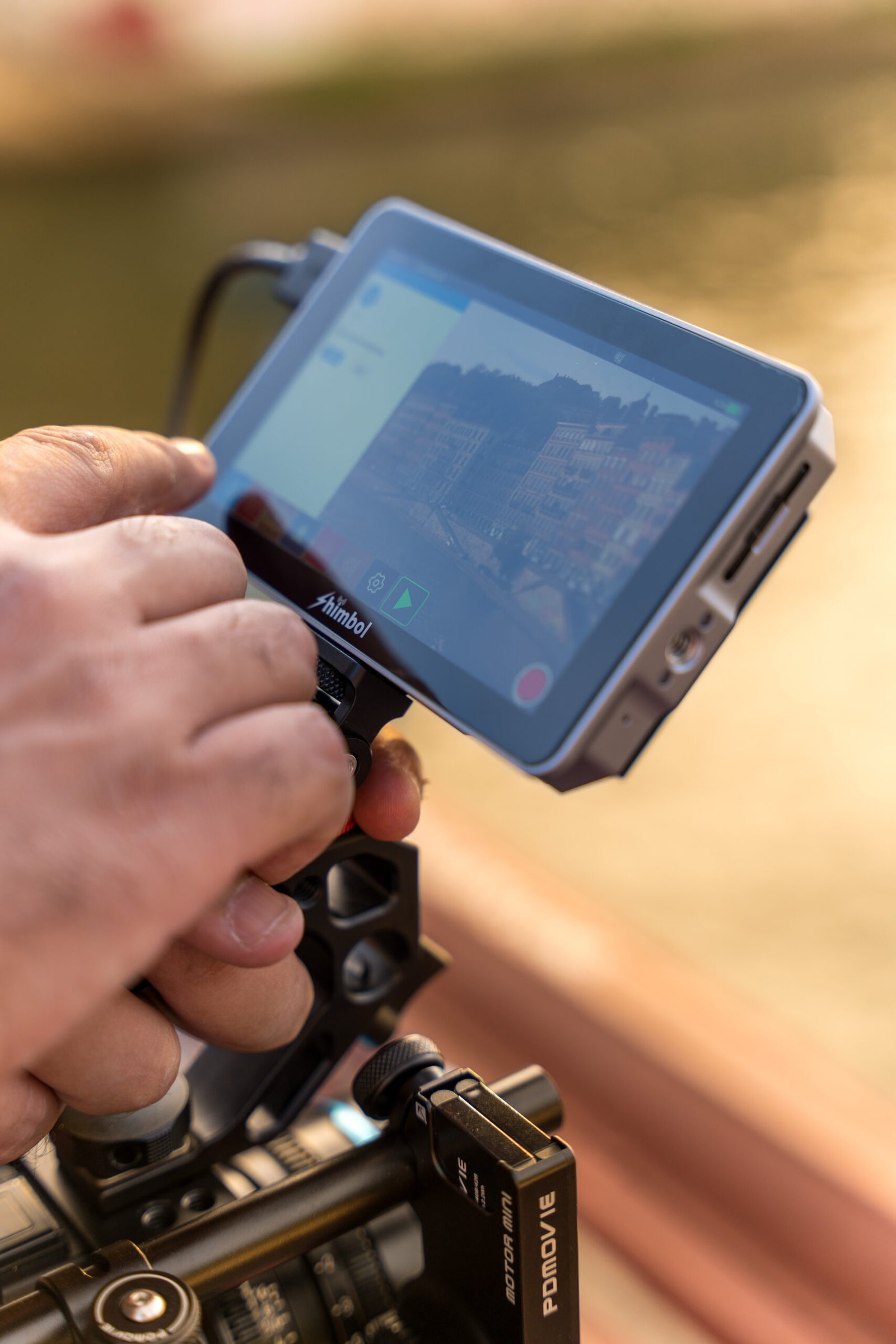You’re probably familiar with wireless video monitors, which have become increasingly popular for convenient and flexible viewing. But have you ever wondered how these devices ensure high-quality audio transmission? Well, prepare to be amazed as we delve into the fascinating world of audio maintenance on wireless video monitors. From advanced signal processing techniques to cutting-edge technology, you’ll discover the secrets behind the seamless audio experience provided by these devices. So, sit back, relax, and get ready to be captivated by the magic of wireless audio quality maintenance.

This image is property of images.pexels.com.
Overview of Wireless Video Monitors
Introduction to wireless video monitors
Wireless video monitors are technological devices that allow users to monitor real-time video feeds remotely, without being physically present at the location. These monitors provide convenience and flexibility, making them popular in various industries such as surveillance, baby monitoring, and live performances. Unlike traditional wired systems that require complex installation and expensive cabling, wireless video monitors use wireless technologies to transmit video and audio data.
Basic functionality of wireless video monitors
Wireless video monitors consist of a camera that captures the video footage and a receiver that receives and displays the video feed. In addition to video transmission, wireless video monitors also include audio functionality. This allows users to not only see what is happening but also hear the accompanying sounds. Audio quality plays a crucial role in wireless video monitoring, as it helps provide a comprehensive understanding of the events being captured.
Importance of Audio Quality
The role of audio in video monitoring
Audio is a vital component of video monitoring as it provides context and enhances the overall viewing experience. In a surveillance setting, clear audio allows security personnel to hear important details such as conversations or alarms, enabling them to react appropriately. Similarly, in baby monitors, audio quality allows parents to monitor their child’s activity and respond promptly to their needs. In live performances, high-quality audio ensures that the audience can fully immerse themselves in the event.
Implications of poor audio quality
Poor audio quality in wireless video monitors can lead to several problems. Firstly, it can cause difficulty in understanding conversations or critical sounds, diminishing the effectiveness of monitoring. Secondly, it can create confusion or misunderstandings, as crucial details may be missed or distorted. Lastly, poor audio quality may lead to user frustration and dissatisfaction, resulting in a negative perception of the wireless video monitor itself.
Wireless Technologies for Audio Transmission
Wireless frequency bands
Wireless video monitors utilize different frequency bands to transmit audio wirelessly. The most common frequency bands used are the 2.4 GHz and 5.8 GHz bands. These frequency bands provide a wide range of channels, allowing for multiple devices to operate simultaneously without interference. However, it is important to note that these frequency bands can also be crowded, leading to potential signal degradation and interference from other wireless devices operating in the same band.
Digital audio transmission
Digital audio transmission is widely employed in wireless video monitors due to its ability to deliver high-quality, noise-free audio. This technology converts the analog audio signal into digital data, which is then transmitted wirelessly. Digital transmission offers improved clarity, less susceptibility to interference, and the ability to utilize error correction techniques for data integrity. Additionally, digital audio transmission allows for encryption, ensuring secure communication between the camera and the receiver.
Analog audio transmission
Analog audio transmission, though less common in modern wireless video monitors, is still utilized in some low-cost or specialized systems. Analog transmission involves the direct conversion and transmission of audio signals without converting them into digital data. While analog transmission does not offer the same level of audio clarity and resistance to interference as digital transmission, it can still provide acceptable audio quality for certain applications.
Factors Affecting Audio Quality in Wireless Video Monitors
Interference and signal degradation
Interference from other wireless devices operating on the same frequency band can significantly degrade audio quality in wireless video monitors. This interference can be caused by devices such as cordless phones, Wi-Fi routers, or even neighboring wireless video monitors. To mitigate this issue, it is essential to choose a wireless video monitor that utilizes frequency-hopping or adaptive frequency selection techniques, which automatically switch to less congested channels to avoid interference.
Distance and line-of-sight limitations
The distance between the wireless video monitor camera and the receiver can impact audio quality. As the distance increases, the signal strength decreases, resulting in potential audio degradation. Additionally, obstacles such as walls or other obstructions can further weaken the signal. Line-of-sight limitations occur when there is no direct path between the camera and the receiver. This can lead to signal loss or reflections, affecting audio quality. To maintain optimal audio quality, it is advisable to position the camera and receiver within the recommended distance and ensure a clear line of sight between them.
Codec and compression choices
Codec and compression choices play a crucial role in maintaining audio quality in wireless video monitors. Codecs are algorithms that encode and decode audio data for transmission and playback. Compression is used to reduce the size of audio files for efficient transmission. However, excessive compression can lead to loss of audio quality. It is important to choose a wireless video monitor that uses codecs and compression methods that strike a balance between file size and audio fidelity.

This image is property of images.pexels.com.
Best Practices for Maintaining Audio Quality
Proper microphone placement
Proper microphone placement is essential for capturing clear and accurate audio. Placing the microphone too far from the sound source can result in weak or distorted audio signals. On the other hand, placing the microphone too close can lead to overload and distortion. It is recommended to position the microphone in a central location that allows for optimal audio capture, minimizing background noise and maximizing the clarity of the intended sound source.
Use of high-quality audio equipment
The use of high-quality audio equipment significantly contributes to maintaining audio quality in wireless video monitoring. Investing in reputable brands known for their superior audio reproduction ensures better sound capture and transmission. This includes using microphones that have a wide frequency response and low noise levels. Additionally, employing audio equipment with features such as built-in noise reduction or cancellation can further enhance audio quality.
Optimizing wireless transmission settings
Wireless video monitors provide various settings that can be adjusted for optimal audio transmission. These settings may include channel selection, transmission power adjustment, or modulation schemes. It is important to experiment and fine-tune these settings to find the best configuration that minimizes interference, maximizes signal strength, and ultimately improves audio quality. It is also advisable to consult the manufacturer’s guidelines and follow their recommendations for optimal performance.
Use of Audio Processing Techniques
Equalization and frequency response adjustments
Audio processing techniques, such as equalization (EQ) and frequency response adjustments, can be employed to enhance audio quality. EQ allows for boosting or cutting specific frequencies to optimize the sound reproduction. This can help compensate for variations in microphone response or correct for room acoustics. Adjusting the frequency response can ensure that important audio cues or frequencies are emphasized, enhancing the overall listening experience in wireless video monitoring.
Noise reduction and cancellation techniques
In environments where background noise is prevalent, noise reduction and cancellation techniques can be employed to improve audio quality. These techniques analyze the audio signal and identify unwanted noise components. By applying specific algorithms, the unwanted noise can be reduced or eliminated, resulting in cleaner and clearer audio. Noise reduction and cancellation techniques are particularly useful in surveillance settings where audio clarity plays a critical role in capturing relevant information.

This image is property of images.pexels.com.
Advanced Features for Audio Quality Enhancement
Multi-channel audio transmission
Some wireless video monitors offer the ability to transmit audio on multiple channels simultaneously. This feature allows for capturing audio from multiple sources or different areas, providing users with a more comprehensive understanding of the monitored environment. Multi-channel audio transmission enhances situational awareness and provides better coverage, especially in large spaces or complex monitoring scenarios.
Low-latency audio transmission
Low-latency audio transmission is crucial in applications where real-time monitoring and immediate response are required. Traditional wireless video monitors may introduce a noticeable delay between the audio source and the audio playback, which can be troublesome in time-sensitive situations. Wireless video monitors with low-latency audio transmission capabilities minimize this delay, ensuring that the audio is in sync with the corresponding video and enabling seamless monitoring and response.
Testing and Measurement of Audio Quality
Subjective evaluation by professionals
Subjective evaluation by professionals is an effective method to assess audio quality in wireless video monitors. Professionals with trained ears and expertise in audio engineering can evaluate the perceived sound quality and identify any issues or deficiencies. They can provide valuable feedback on the overall audio fidelity, clarity, and intelligibility, allowing manufacturers to make necessary adjustments and improvements.
Objective measurements using audio analyzers
Objective measurements using audio analyzers provide numerical data to assess and quantify audio quality in wireless video monitors. Audio analyzers can measure various parameters such as frequency response, signal-to-noise ratio, distortion, and dynamic range. These measurements provide objective metrics that can be compared against industry standards or specific requirements. By analyzing the data collected from audio analyzers, manufacturers can optimize their wireless video monitor designs for superior audio performance.
Wireless Video Monitors vs Wired Systems
Comparing audio quality in wireless and wired systems
Wired systems generally provide superior audio quality compared to wireless video monitors. Wired systems establish a direct and uninterrupted connection between the camera and the receiver, eliminating the potential for signal degradation or interference. The use of cables in wired systems ensures a reliable and consistent audio signal without the limitations and uncertainties associated with wireless transmission. However, wireless video monitors offer the advantage of flexibility and convenience, allowing users to monitor from anywhere within the range of the wireless signal.
Advantages and limitations of wireless video monitors
Wireless video monitors offer several advantages over wired systems, making them a popular choice in many applications. The wireless nature of these monitors enables easy installation without the need for extensive wiring or professional assistance, saving time and cost. Wireless video monitors provide greater mobility, allowing users to monitor from different locations or while on the move. However, there are limitations to consider, such as potential signal degradation, interference from other devices, and distance restrictions. Proper setup, selection of appropriate wireless technologies, and adherence to best practices are crucial to mitigate these limitations and ensure optimal audio quality.
Future Trends in Wireless Video Monitors
Advancements in wireless audio technologies
The future of wireless video monitors holds promise for advancements in wireless audio technologies. Ongoing research and development efforts aim to improve the audio quality of wireless video monitors by leveraging the latest wireless communication protocols and encoding techniques. Innovations such as adaptive frequency hopping, smart antenna technologies, and improved compression algorithms are expected to deliver even higher-quality audio transmission, minimizing interference and maximizing signal integrity.
Integration of artificial intelligence for audio optimization
Artificial intelligence (AI) is likely to play a significant role in optimizing audio quality in wireless video monitors. AI algorithms can analyze audio signals in real-time, identify noise patterns, and automatically adjust settings to enhance audio quality. This integration of AI can help eliminate background noise, improve speech intelligibility, and optimize audio parameters based on the specific monitoring environment. The use of AI-driven audio optimization can lead to more efficient and effective wireless video monitoring systems.
In conclusion, maintaining audio quality is essential for wireless video monitors to provide a complete and reliable monitoring experience. Through the use of wireless technologies, audio processing techniques, and adherence to best practices, audio quality can be optimized to ensure clear and accurate sound reproduction. Advancements in wireless audio technologies and the integration of artificial intelligence hold promising prospects for further enhancing the audio quality of wireless video monitors. With the continuous evolution of these technologies, wireless video monitors will continue to offer convenience and flexibility while delivering high-quality audio for various applications.

Meet Penny Sterling, the editor behind the captivating content of our blog, “Wireless Video Monitor.” With a background in electrical engineering and a deep passion for technology, Penny has become a leading authority in the world of wireless video monitors. Her ability to distill complex concepts into accessible articles has made her a trusted guide for both tech enthusiasts and newcomers to the field. Penny’s unwavering commitment to research and staying up-to-date ensures that “Wireless Video Monitor” remains an authoritative source for reliable information. Get ready to embark on a journey of wireless video monitor exploration with Penny Sterling as your knowledgeable and dedicated mentor.


